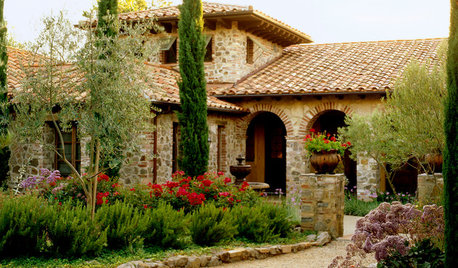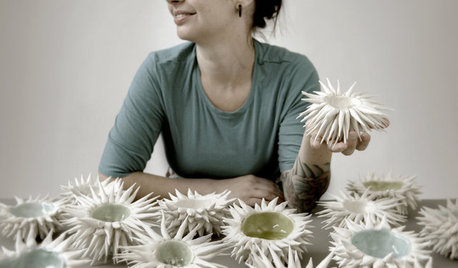What to do about clay
skizot
15 years ago
Related Stories

GARDENING GUIDESHow to Stop Worrying and Start Loving Clay Soil
Clay has many more benefits than you might imagine
Full Story
ORANGECozy Up With Warm Clay Colors
Give your space an autumn color splash with shades of pumpkin and persimmon
Full Story
GARDENING GUIDES9 Clay-Busting Native Flowers for Summer Sun
These plants survive and even thrive in tough clay soil east of the Rocky Mountains
Full Story
GARDENING GUIDESGardening Solutions for Heavy Clay Soils
What’s a gardener to do with soil that’s easily compacted and has poor drainage? Find out here
Full Story
ROOFSRoof Materials: Get an Old-World Look With Clay Roof Tiles
The ancient roof material of choice remains the modern-day ideal for authentic Italian, Mediterranean and Spanish home styles
Full Story
TASTEMAKERSInterview: Heather Knight of Element Clay Studio
Nature, architecture and a creative community inspire an Asheville artist
Full Story
GARDENING GUIDESNew Ways to Think About All That Mulch in the Garden
Before you go making a mountain out of a mulch hill, learn the facts about what your plants and soil really want
Full Story
WORKING WITH PROSWhat Do Landscape Architects Do?
There are many misconceptions about what landscape architects do. Learn what they bring to a project
Full Story
COLORHave You Heard the Hues? 15 Colors You May Not Know About
Name-drop these shades at holiday parties — or better, try one on your walls — and expand your palette possibilities
Full Story
PAINTINGWhat to Know About Milk Paint and Chalk Paint — and How to Use Them
Learn the pros, cons, cost and more for these two easy-to-use paints that are great for giving furniture a vintage look
Full Story







soccer_dad
bpgreen
Related Professionals
Hyattsville Landscape Architects & Landscape Designers · New Mexico Landscape Architects & Landscape Designers · White Oak Landscape Architects & Landscape Designers · Clayton Landscape Contractors · Fort Worth Landscape Contractors · Galt Landscape Contractors · Haverhill Landscape Contractors · Laguna Hills Landscape Contractors · Long Branch Landscape Contractors · Mashpee Landscape Contractors · Mission Bend Landscape Contractors · Nanuet Landscape Contractors · Newberg Landscape Contractors · Olympia Landscape Contractors · Quincy Landscape ContractorsskizotOriginal Author
lamcon
hsvcara
skizotOriginal Author
bpgreen
lamcon
bpgreen
soccer_dad
rdaystrom
bpgreen
philes21
lamcon
philes21
soccer_dad
lou_spicewood_tx
philes21
lou_spicewood_tx
rdaystrom
skizotOriginal Author
soccer_dad
rdaystrom
lou_spicewood_tx
barrychan
soccer_dad
barrychan
sdrone
bpgreen
sdrone
sdrone
soccer_dad
barrychan